Is Apricot a Tropical Fruit? Explained!
Apricots are not tropical fruits; they are stone fruits that grow best in temperate climates. Apricots require a period of winter dormancy with cold temperatures to thrive, which is a stark contrast to the warm, year-round conditions favored by tropical fruits.
Tropical fruits are typically grown in regions that do not experience frost, such as near the equator, where the climate is consistently warm.
Apricots, on the other hand, need a colder period to enter dormancy and a mild summer for fruit maturation.
Key differences between apricots and tropical fruits include:
For example, while mangoes and pineapples thrive in tropical conditions, apricots need cooler winters, making them more suited to temperate zones.
Understanding the apricot’s temperate climate preference clarifies why it’s not a tropical fruit.
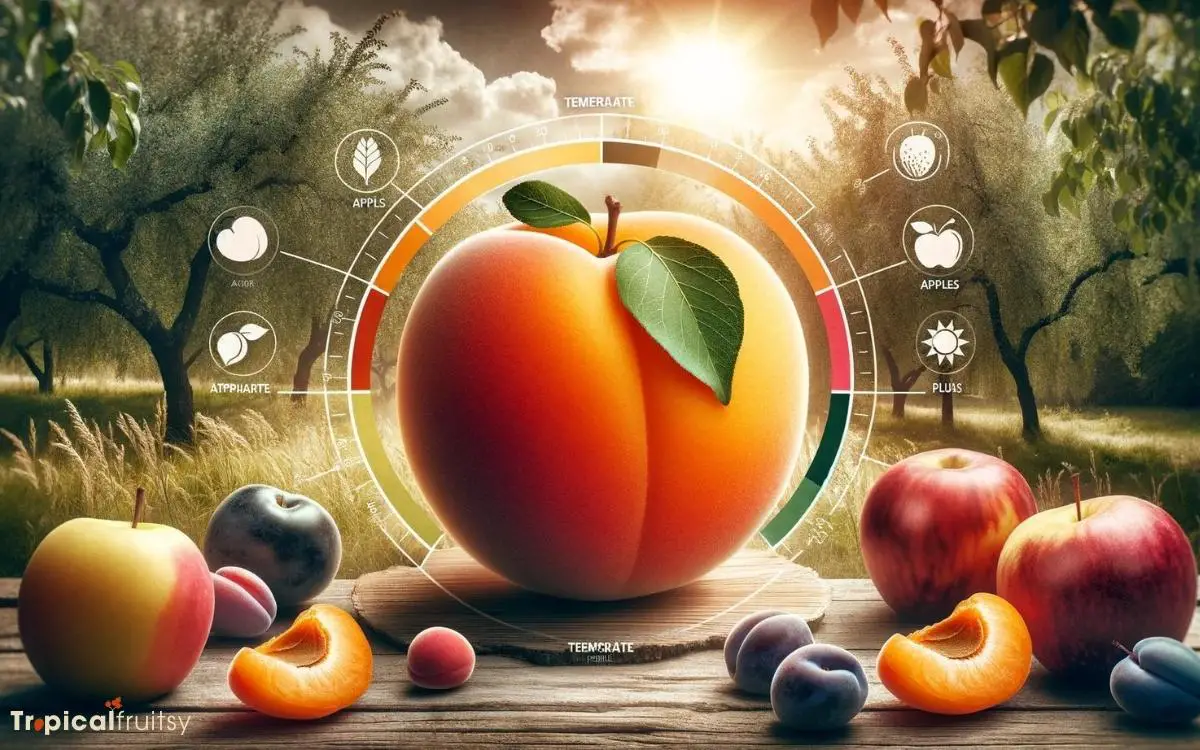
Key Takeaway
7 Characteristic: Is Apricot a Tropical Fruit
| Characteristic | Description |
|---|---|
| Type | Temperate Fruit |
| Preferred Climate | Cold winters, warm summers |
| Growing Regions | Parts of Asia and Europe, some areas in North America |
| Harvest Season | Late spring to early summer |
| Fruit Appearance | Small, golden-orange with velvety skin, similar to a peach |
| Taste | Sweet with a hint of tartness |
| Common Uses | Fresh consumption, dried, jams, jellies, desserts |
Defining Tropical Fruits

Tropical fruits, characterized by their cultivation in warm climates near the equator, include a diverse range of produce such as mangoes, pineapples, and papayas.
This category of fruits generally requires a frost-free environment with ample sunshine and high levels of humidity to thrive.
Botanically, many tropical fruits are classified as drupes, berries, or fleshy capsules, and they often contain a rich array of vitamins, minerals, and antioxidants.
The precise climatic conditions necessary for the optimal growth of these fruits are typically found between the Tropic of Cancer and the Tropic of Capricorn.
Understanding the specific horticultural requirements and environmental parameters that define tropical fruit cultivation is imperative for accurate classification and successful agricultural practices within this produce category.
Apricot’s Botanical Profile
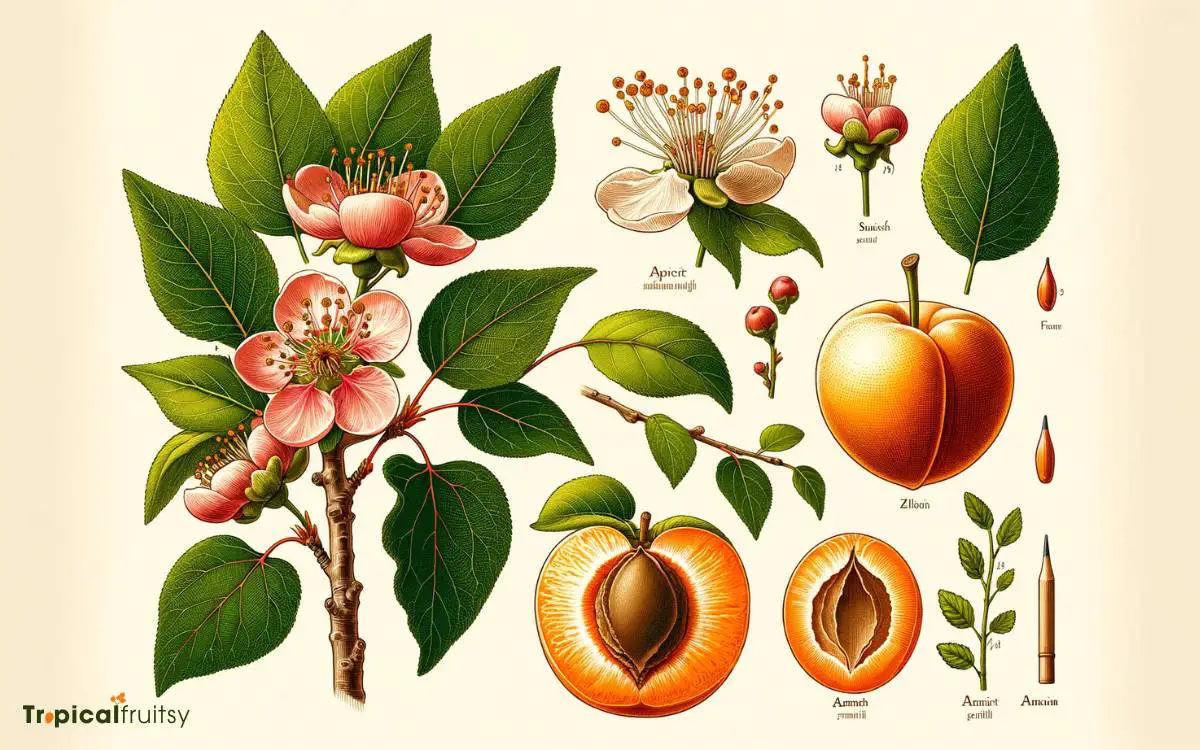
The apricot, scientifically known as Prunus armeniaca, is a stone fruit that originates from a temperate climate zone. It belongs to the Rosaceae family, which includes other notable species such as roses, cherries, and almonds.
The apricot tree is a deciduous species, characterized by its moderate size and spreading canopy. Botanically, the apricot’s fruit is a drupe with a fleshy exterior surrounding a hard pit or endocarp, which encases the seed.
The phenology of Prunus armeniaca is marked by white to pink flowers blooming in early spring, preceding leaf emergence. This timing is critical for successful pollination and fruit set.
Optimal cultivation requires a chilling period, underscoring its preference for non-tropical environments.
Apricots thrive in well-drained, loamy soils with ample sunlight, and they are susceptible to various pests and diseases typical of temperate fruit trees.
Optimal Growing Conditions
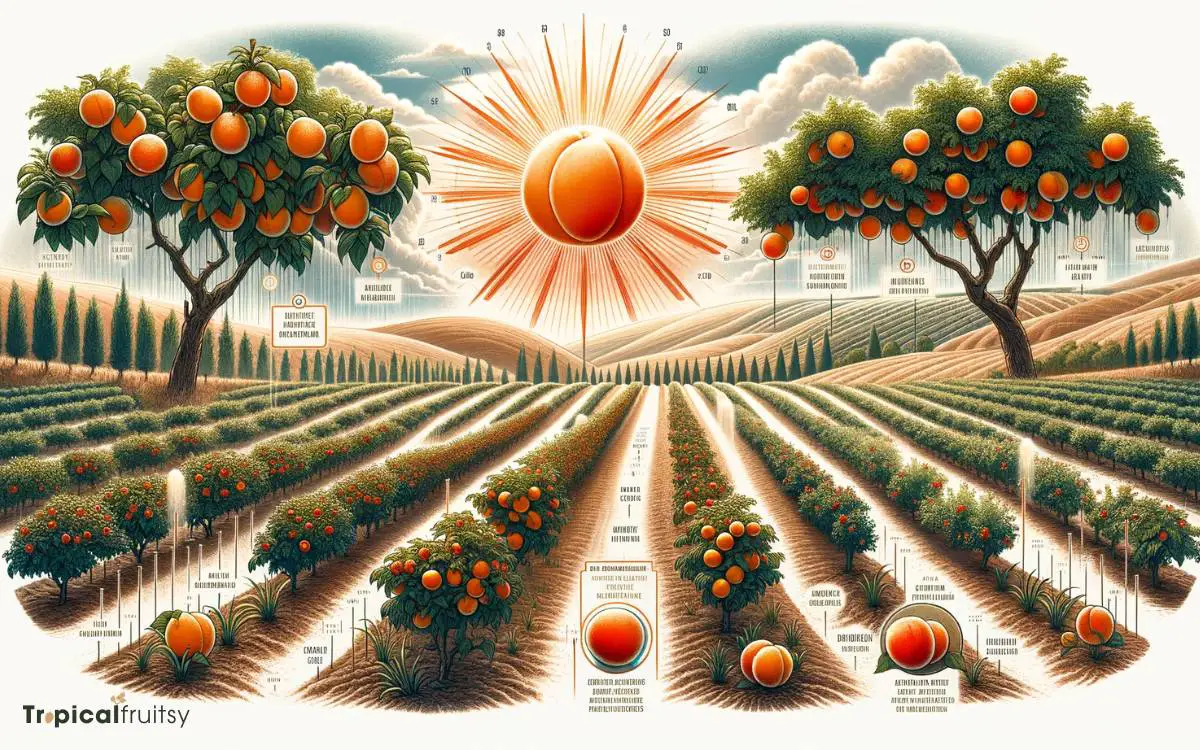
Apricots thrive under specific climatological parameters, which include moderate temperatures and distinct seasons.
The species demonstrates a pronounced preference for well-drained soils with neutral to slightly alkaline pH levels.
An analysis of these conditions is critical to understanding the geographical distribution and cultivation success of apricot trees.
Climate Requirements
Optimal growth for apricot trees requires a temperate climate with cold winters and long, warm summers.
These conditions are crucial for the proper development of apricot buds, which necessitates a period of dormancy induced by colder temperatures followed by the warmth required for bud break and fruit development.
- Chilling Requirement: Apricot trees necessitate between 700 to 1000 chilling hours, where temperatures range between 0°C to 7.2°C (32°F to 45°F), to break dormancy.
- Warm Summers: Post-dormancy, a sustained period of warm temperatures, typically above 25°C (77°F), is essential for fruit set and maturation.
- Frost Sensitivity: Late spring frosts can devastate blossoms, so areas with minimal late frost risks are preferred.
- Well-Drained Soil: Loamy, well-drained soils with a pH range of 6.0 to 7.5 foster healthy root development.
- Moderate Watering: Consistent, moderate watering supports growth, but excessive moisture should be avoided to prevent root rot and other fungal diseases.
Adherence to these climatic imperatives will significantly influence the viability and productivity of apricot cultivation.
Soil Preferences
Continuing the examination of apricot cultivation, soil quality emerges as a pivotal factor in achieving optimal growing conditions for these fruit trees.
The soil’s physical and chemical properties must be conducive to the particular requirements of the apricot.
Analytically, the soil should exhibit adequate drainage, a neutral to slightly alkaline pH, and a fertile composition to support the growth and development of apricot trees.
| Soil Property | Ideal Range | Significance |
|---|---|---|
| Texture | Sandy Loam | Ensures drainage |
| pH Level | 6.5 – 8.0 | Affects nutrient availability |
| Organic Matter | High | Enhances fertility |
| Drainage | Well-drained | Prevents root rot |
| Nutrient Content | Balanced (NPK) | Supports growth |
These parameters are critical in establishing a robust root system and ensuring the viability and productivity of the apricot tree, thereby rendering the fruit’s quality and yield.
Comparing Apricots and Tropicals
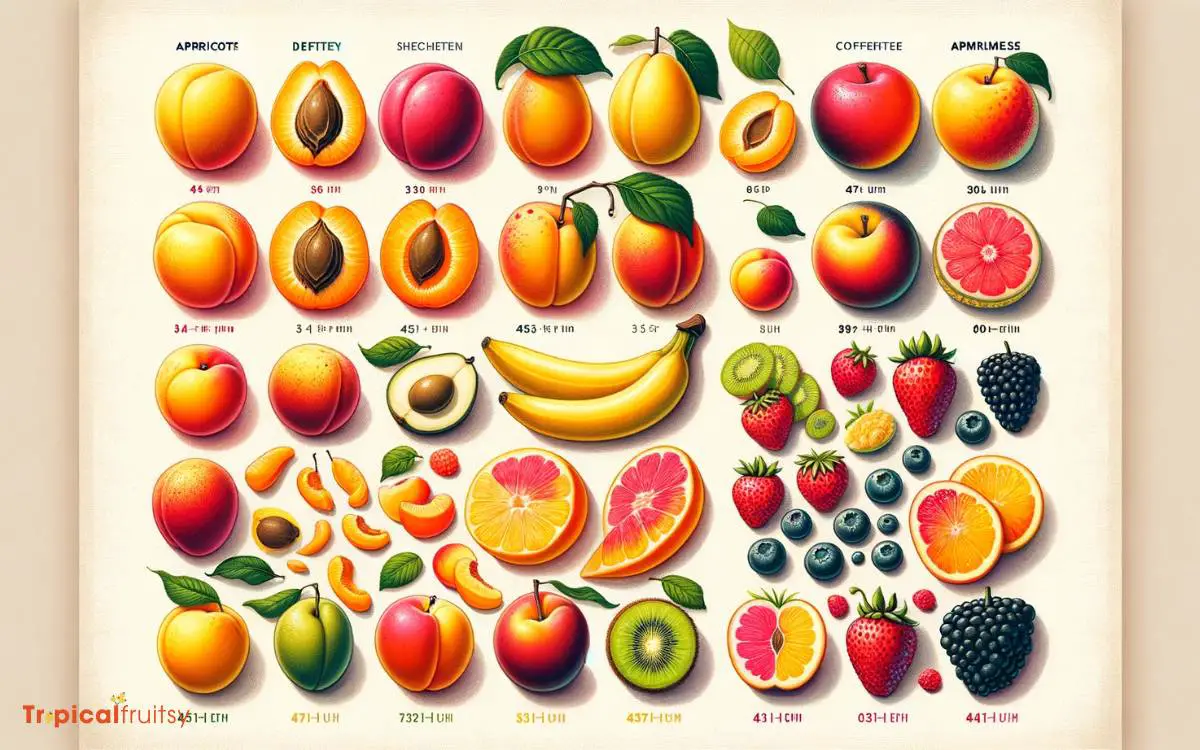
In contrast to tropical fruits, apricots thrive in temperate climates and exhibit distinct differences in cultivation requirements and botanical characteristics.
- Climate Adaptation: Apricots require a chilling period for successful bud development, unlike tropical fruits that favor year-round warm conditions.
- Soil Composition: They grow best in well-draining, slightly alkaline soil, contrasting with the more varied requirements of tropical species.
- Water Needs: Apricot trees are drought-tolerant once established, whereas many tropical fruits necessitate consistent moisture.
- Frost Sensitivity: Tropical fruits are generally intolerant of frost, while apricots can withstand colder temperatures.
- Harvesting Season: The apricot’s growing season aligns with temperate summer months, unlike the continuous growth cycles of many tropical fruits.
These horticultural nuances influence not only the agronomy but also the taste and nutritional content of apricots, which we will explore in the following section.
Taste and Nutritional Content

Apricots, while distinct from their tropical counterparts in growth conditions, offer a significant source of vitamins A and C, dietary fiber, and potassium.
The organoleptic properties of apricots—namely their sweet yet slightly tart flavor profile—are attributable to the presence of various sugars and organic acids.
Nutritionally, apricots are lauded for their high β-carotene content, which the body metabolizes into vitamin A, essential for optimal vision, immune function, and skin health.
The vitamin C acts as a potent antioxidant, while the dietary fiber aids in maintaining gastrointestinal regularity. Potassium, a vital mineral in the fruit, regulates fluid balance and nerve signals.
These nutritional elements render the apricot a valuable component of a balanced diet. This rich nutrient profile also influences the fruit’s versatility in culinary applications, a topic we will explore in the following section.
Common Uses in Cuisine

Apricots are frequently utilized in the culinary world due to their versatile flavor profile, which exhibits a balance between sweet and tart notes.
This fruit is commonly processed into jams and preserves, capitalizing on its high pectin content that aids in gel formation and shelf stability.
Additionally, apricots serve as a valuable baking ingredient for pastries and desserts, and their unique taste and texture make them suitable for enhancing savory dishes.
Jam and Preserves
The transformation of apricots into jam and preserves is a prevalent culinary application that capitalizes on the fruit’s natural sweetness and tartness.
Through the process of slow cooking apricots with sugar, pectin is released, which is a polysaccharide that acts as a gelling agent, thereby giving jam its characteristic consistency.
The high sugar concentration in preserves acts as a preservative, allowing the fruit to be stored for extended periods.
This method of fruit conservation is rooted in the science of osmosis, where water diffuses out of the fruit cells, inhibiting microbial growth.
- Pectin Concentration: Determines the gelling strength in the final product.
- Sugar Ratio: Balances preservation efficacy and flavor profile.
- pH Adjustment: Acidification enhances gelling and prevents microbial spoilage.
- Temperature Control: Critical for achieving the desired consistency without degrading the fruit’s integrity.
- Sterilization: Ensures long-term preservation by eliminating pathogenic microorganisms.
Baking Ingredient
Beyond their role in jams and preserves, apricots are frequently utilized as a baking ingredient due to their ability to impart a rich, fruity flavor and moist texture to a variety of pastries and desserts.
The incorporation of apricots can be analyzed from the standpoint of food science, where their natural sugars, when exposed to the process of caramelization under high temperatures, contribute to the Maillard reaction, enhancing the flavor profile of the baked goods.
Additionally, the pectin content in apricots aids in moisture retention, providing a desirable crumb structure and extending the shelf-life of the culinary creation.
| Use in Baking | Desired Effect | Scientific Benefit |
|---|---|---|
| Apricot Puree | Natural Sweetener | Enhances Maillard Reaction |
| Diced Apricots | Texture | Increases Moisture Retention |
| Apricot Glaze | Sheen | Provides a Protective Coating |
Savory Dish Complement
Moving from their sweet applications, apricots also offer a unique flavor enhancement in savory dishes, commonly found in Middle Eastern and Mediterranean cuisines.
Their incorporation is not merely for the infusion of a sweet nuance but also for the acidic complexity they contribute.
This delicate balance of flavors is pivotal in creating a sophisticated gustatory profile within a dish. Apricots can be utilized in various forms, such as fresh, dried, or as a preserve, to impart their distinctive taste.
- Tagine: Apricots are stewed with meats like lamb or chicken, aromatic spices, and vegetables to create a rich, fragrant dish.
- Chutney: A compote of apricots, vinegar, and spices serves as an accompaniment to curry dishes and cheeses.
- Grilled: Halved apricots can be grilled to accompany savory meats, adding a caramelized sweetness.
- Salads: Diced apricots add a fruity dimension to salads, balancing out the savory elements.
- Stuffing: Finely chopped apricots are mixed into stuffing for poultry or pork, enhancing the meat’s flavor profile.
Is Apricot Considered a Tropical Fruit That Can Aid in Weight Loss?
Yes, apricots are considered a tropical fruit for weight loss. Packed with fiber and low in calories, apricots can aid in weight loss by promoting feelings of fullness and reducing overall calorie intake. Additionally, they are rich in antioxidants and other nutrients that support overall health and well-being.
Debunking Apricot Myths
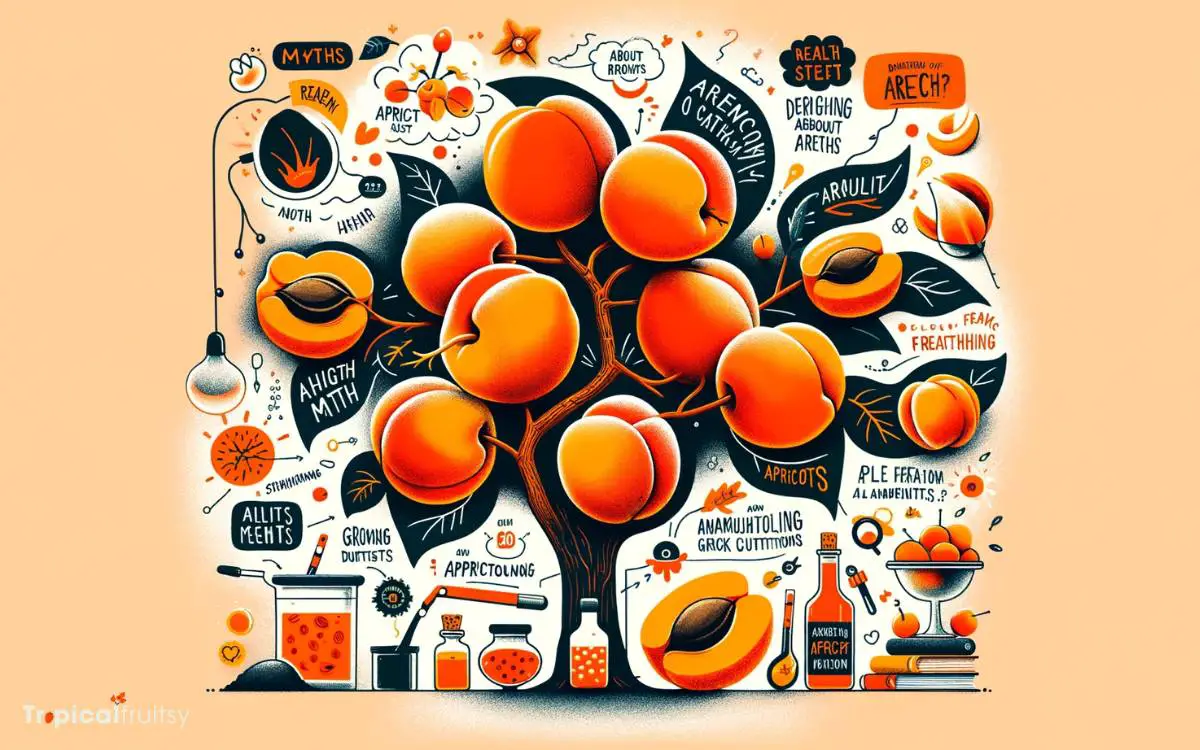
Several misconceptions surround the classification of apricots, often misleadingly labeled as tropical fruits.
In truth, apricots are temperate fruits, thriving in regions with distinct seasonal changes, unlike the equatorial climates where tropical fruits flourish.
The following table contrasts common myths with factual information to clarify the ecological niche of apricots:
| Myth | Fact | Significance |
|---|---|---|
| Apricots need tropical climates to grow. | Apricots require cold winters for dormancy. | Misunderstanding climate needs can lead to cultivation failures. |
| Apricots are native to the tropics. | They originate from temperate zones in Asia. | Historical geographic distribution impacts current cultivation practices. |
| Apricots and mangoes are related. | They belong to different botanical families. | Distinguishing phylogenetic relationships aids in accurate classification. |
| Apricots can only be grown near the equator. | They are cultivated successfully in Mediterranean climates. | Recognizing optimal growing regions maximizes agricultural yield. |
| Apricots are less nutritious than tropical fruits. | Apricots are rich in vitamins A and C. | Nutritional content is not dictated by climatic classification. |
Understanding these distinctions is essential for both horticulturists and consumers seeking accurate information about the fruits they grow and consume.
Conclusion
The apricot is a temperate fruit, thriving in cooler climates rather than the warm, humid regions favored by tropical species. Despite common misconceptions, it cannot be categorized alongside mangoes or pineapples.
Its unique cultivation requirements, distinct flavor profile, and versatile culinary applications set it apart from its tropical counterparts.
As the saying goes, it’s important to compare apples to apples, and in this case, apricots to their appropriate kin, to avoid a fruitless comparison.






